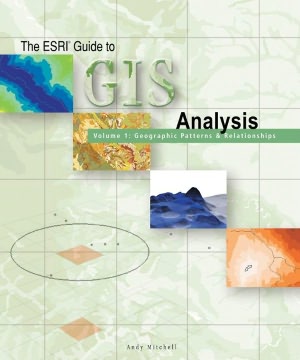The Esri Guide to GIS Analysis: Volume 1: Geographic Patterns and Relationships epub
Par fishburn zachery le mercredi, décembre 30 2015, 01:01 - Lien permanent
The Esri Guide to GIS Analysis: Volume 1: Geographic Patterns and Relationships. Andy Mitchell
The.Esri.Guide.to.GIS.Analysis.Volume.1.Geographic.Patterns.and.Relationships.pdf
ISBN: 9781879102064 | 250 pages | 7 Mb

The Esri Guide to GIS Analysis: Volume 1: Geographic Patterns and Relationships Andy Mitchell
Publisher: Esri Pr
These tools can help you summarize and evaluate geographic distributions, identify statistically significant spatial outliers and clusters (hot spots), and assess broad geographic patterns and trends over time. Mitchell, Andy, The ESRI Guide to GIS Analysis, Volume 2, Spatial Measurements and Statistics, ESRI Press, 2005. 1Monogenetic volcanic fields consist of a large number of individual, commonly mafic volcanoes, which erupted only once with small volumes of magma (usually <0.01 km3; Walker, 1993). They take the form of scoria The result of this “blind- test” of lineament locations is then evaluated and compared with existing studies of fault distribution patterns in which alignments are recognized. Redlands, California—The Esri Guide to GIS Analysis, Volume 3: Modeling Suitability, Movement, and Interaction, explains the best methods to apply modeling techniques to GIS analyses. Today I'd like to add a third to the list: The ESRI Guide to GIS Analysis, Volume 1: Geographic Patterns and Relationships by Andy Mitchell. Once geographic features are mapped you can begin to understand why things are where they are. Geographically Weighted Regression: the analysis of spatially varying relationships. The ESRI Guide to GIS Analysis Volume 1: Geographic Patterns & Relationships. Andy , The ESRI Guide to GIS Analysis, Volume 1, Geographic Patterns and Relatoinships, ESRI Press, 1999. Andy Mitchell is a technical writer with more than 20 years experience in GIS. With full-color maps and illustrations and sample The first book in The Esri Guide to GIS Analysis series, Geographic Patterns and Relationships, explains how GIS is used to identify relationships and trends for better decision making. �This is not a software manual, and it rightly avoids tying to any particular brand or version of GIS. Fotheringham, Stewart A., Chris Brunsdon, and Martin Charlton. These resources will help The ESRI Guide to GIS Analysis, Volume 2 . (2005)–The ESRI Guide to GIS Analysis. GIS analysis is a process for looking at geographic patterns in data and at relationships between features.
